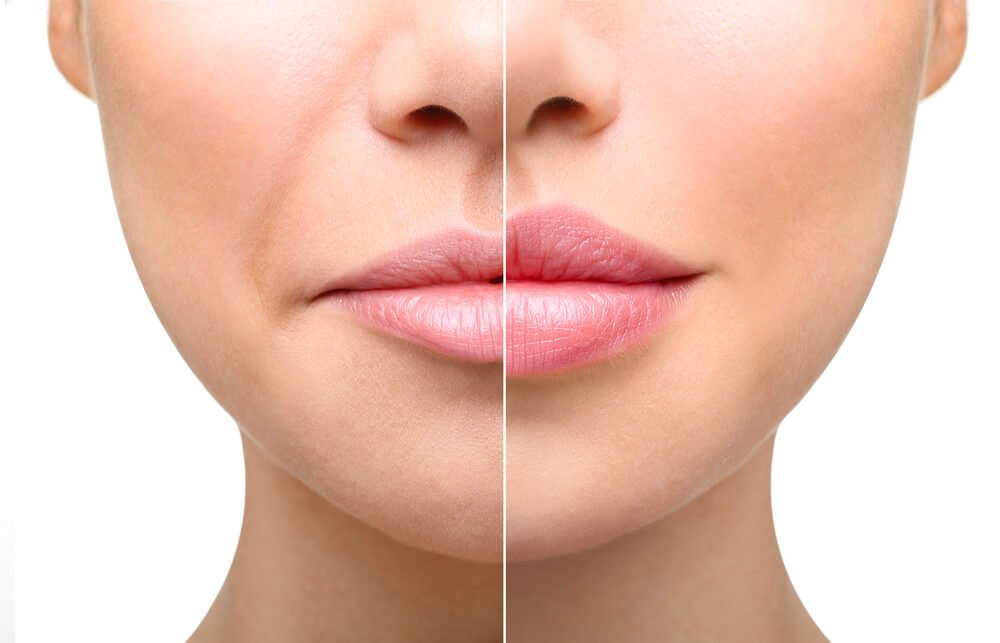Managing allergies related to derma fillers is essential for a safe and satisfying cosmetic experience. Many people seek these treatments to enhance their appearance, but allergic reactions can occur. Historically, the use of dermal fillers dates back decades, evolving in safety and effectiveness. However, allergic responses can still arise from ingredients like hyaluronic acid or collagen. Understanding how to identify symptoms and take preventive measures is crucial. Knowing your skin type and discussing any history of allergies with your provider, especially when considering injectable fillers, can significantly reduce risks. This guide will explore practical tips and strategies for managing potential allergies while enjoying the benefits of derma fillers. Stay informed to make the best choices for your skin health and beauty goals.
Key Takeaways
-
Know Your Allergies: Before getting dermal fillers, consult with your doctor about any known allergies to ensure safety during the procedure.
-
Watch for Symptoms: Be aware of symptoms like redness, swelling, or itching after injectable fillers injections. Early recognition can help manage allergic reactions effectively.
-
Take Precautions: Follow all pre-injection guidelines for injectable fillers, such as avoiding certain medications and informing your provider about any allergies or medical history.
-
Have a Plan: Discuss with your healthcare provider how to manage potential allergic reactions, including the use of injectable fillers, antihistamines, or other treatments.
-
Understand Risks: Familiarize yourself with common complications and risks associated with fillers so you can make informed decisions.
-
Seek Professional Help: If you experience severe reactions to injectable fillers, seek immediate medical attention to address any complications quickly and safely.
Understanding Filler Allergies
Common Allergens
Allergic reactions to dermal fillers can occur due to various allergens. Common culprits include animal-derived ingredients like collagen and hyaluronic acid. These components, often including injectable filler, come from animal sources, leading to potential allergic responses in some individuals.
Synthetic compounds also pose risks. Some fillers contain substances like polymethylmethacrylate (PMMA) or calcium hydroxylapatite. These materials can trigger reactions as well. Individuals with known sensitivities should consult with their healthcare providers before using these injectable filler products.
Immune Response
The body’s immune system reacts to foreign substances, including allergens in fillers. This response can lead to an allergic filler reaction. When the immune system identifies a filler ingredient as harmful, it produces antibodies. These antibodies attack the allergen, causing symptoms like swelling, redness, or itching, similar to an injectable filler.
Understanding how the immune system works is crucial for managing allergies. The severity of reactions can vary widely among individuals. Some may experience mild symptoms, while others face severe consequences.
Types of Reactions
Allergic reactions can be classified into two main types: immediate hypersensitivity and delayed-type hypersensitivity reactions.
Immediate hypersensitivity occurs within minutes after exposure. Symptoms may include hives, difficulty breathing, or anaphylaxis in severe cases. This type of reaction is often linked to IgE antibodies, which trigger rapid responses.
Delayed-type hypersensitivity takes longer to develop. Symptoms may appear hours or even days after exposure. This type involves T-cell mediated responses and usually results in localized swelling or irritation at the injection site.
Individuals should monitor their bodies for any signs of these reactions after receiving dermal fillers. Recognizing early symptoms allows for prompt medical attention if necessary.
Managing Allergies
Managing allergies related to dermal fillers requires careful planning. Consulting with a qualified professional is essential before any procedure. They can help identify potential allergens based on individual health history.
Patients should also communicate any previous allergic reactions to their healthcare provider. This information helps professionals recommend safer alternatives.
In some cases, pre-testing may be advised. A small amount of filler could be injected into a less visible area to check for reactions before proceeding with full treatment.
Symptoms of Allergic Reactions
Common Signs
Allergic reactions to dermal fillers can show various symptoms. These symptoms range from mild irritation to severe responses. Localized signs are the most frequent. Swelling and redness often appear at the injection site. This swelling can sometimes last for several days. Other common signs include itching and tenderness in the treated area.
Monitoring these localized symptoms is crucial. They usually do not require immediate medical attention. However, persistent or worsening symptoms may indicate a more serious issue.
Systemic Symptoms
Systemic allergic reactions can occur but are less common. These reactions affect the whole body rather than just one area. They can present as difficulty breathing, swelling of the face or throat, and rapid heartbeat. If any systemic symptoms develop, it is essential to seek emergency help immediately.
Patients must remain vigilant after receiving fillers. Monitoring for signs like hives or widespread rash is important. These could be early indicators of a systemic reaction.
Severity and Treatment Urgency
The severity of allergic reactions varies widely. Mild reactions might only need home care, such as cold compresses for swelling. In contrast, severe reactions require urgent medical treatment. Recognizing the difference helps in deciding when to act.
e individuals may experience anaphylaxis, a life-threatening condition. This occurs when the body reacts severely to an allergen. It can lead to shock, difficulty breathing, and even loss of consciousness. Immediate intervention with epinephrine is critical in these cases.
Allergy Risks
Certain factors increase the risk of developing allergies to dermal fillers. Previous allergic reactions to similar products heighten this risk significantly. Individuals with known sensitivities should discuss their history with their healthcare provider before treatment.
e fillers contain substances that can provoke allergies more than others. For example, hyaluronic acid is generally well-tolerated, while other ingredients might cause issues for sensitive individuals.
Importance of Awareness
Awareness of potential allergy risks is vital for anyone considering dermal fillers. Understanding what symptoms to look for can make a difference in outcomes. Early detection leads to better management of allergic reactions.
Educating yourself about possible signs and symptoms will help in making informed decisions. Consulting with qualified professionals also aids in minimizing risks associated with filler treatments.
Precautions Before Injections
Disclose Allergies
Patients must inform their doctor about any known allergies. This includes allergies to medications, foods, or materials used in cosmetic procedures. Previous adverse reactions can indicate a risk for future complications.
Sharing this information helps practitioners make informed decisions. It allows them to choose the safest products and techniques for each individual. Patients should be honest and thorough during these discussions.
Allergy Testing
A patch test or allergy test is highly recommended. This is especially true for those with a history of allergies. These tests can identify potential reactions before injections occur.
During an allergy test, a small amount of the injectable is placed on the skin. The area is then monitored for any signs of a reaction. If no reaction occurs, it indicates a lower risk for complications during actual injections.
Choose Qualified Practitioners
Selecting a qualified practitioner is essential. A skilled professional understands proper injection techniques. They can assess individual risk factors effectively.
Practitioners should have experience with hyaluronic injections and other cosmetic injectables. They must also stay updated on best practices and safety protocols. This knowledge helps minimize the chances of accidental injection or other complications.
Understand Injectable Options
Patients should learn about different types of injectables available. Hyaluronic skin injections are popular for facial enhancements. Lip injections also use hyaluronic acid to add volume.
Understanding the options allows patients to make informed choices. Researching the specific products used in procedures is important as well. Knowing what’s in these injectables can help patients feel more comfortable.
Review Aftercare Instructions
After receiving injections, patients should follow aftercare instructions closely. Adhering to these guidelines can help reduce the risk of allergic reactions. Practitioners often provide detailed instructions post-procedure.
Common aftercare tips include avoiding strenuous activities and excessive sun exposure. Patients should also monitor the injected areas for unusual changes or reactions.
Monitor Symptoms
Post-injection, monitoring symptoms is crucial. Patients should be aware of signs that may indicate an allergic reaction. These include redness, swelling, or itching at the injection site.
If any concerning symptoms arise, contacting a healthcare provider immediately is vital. Quick action can prevent serious complications from worsening.
Managing Allergic Reactions
Antihistamines
Antihistamines can be useful for managing mild allergic reactions. Keeping them on hand is a smart move after receiving dermal fillers. Patients may experience swelling, redness, or itching at the injection site. Taking an antihistamine can help relieve these symptoms quickly.
e common over-the-counter options include diphenhydramine and loratadine. Always consult with a healthcare provider before taking any medication. They can recommend the best choice based on individual health needs.
Emergency Plan
An emergency plan is crucial for severe allergic reactions. Some individuals may have a more serious response to dermal fillers. Access to epinephrine should be part of this plan. Epinephrine can counteract life-threatening symptoms like difficulty breathing or swelling of the throat.
Patients should discuss their allergy history with their injector. They need to know if they have had previous reactions to similar materials. Having an emergency kit ready can save lives in case of an unexpected event.
Follow-Up Appointments
Follow-up appointments are important for monitoring reactions. Some allergic responses may not appear immediately after the procedure. Delayed reactions can occur days or even weeks later. Regular check-ins with a healthcare provider can help manage these situations effectively.
During follow-ups, patients should report any unusual symptoms. This includes persistent swelling, pain, or changes in skin texture. Healthcare providers can assess these concerns and recommend appropriate actions.
Material Awareness
Understanding the materials used in dermal fillers is essential. Different fillers contain various substances that may trigger allergies. Common components include hyaluronic acid, collagen, and calcium hydroxylapatite.
Patients should inform their injector about known allergies before treatment. This helps minimize risks associated with specific materials. Knowledge about filler ingredients allows for better decision-making regarding procedures.
Experience Matters
Experience plays a significant role in managing allergic reactions to dermal fillers. Choosing a qualified and experienced injector reduces risks significantly. Well-trained professionals know how to handle complications effectively.
They can provide guidance on what to expect after injections. Clear communication about potential side effects helps prepare patients for possible reactions.
Common Complications and Risks
Infection Risks
Infection is a significant risk when using dermal fillers. Bacteria can enter the skin during the injection process. If proper hygiene is not maintained, this can lead to serious complications. In some cases, infections may require antibiotics or even surgery to resolve.
Signs of infection include redness, swelling, and pain at the injection site. Immediate medical attention is essential if these symptoms arise. Preventing infection starts with choosing a qualified professional for the procedure.
Granulomas Formation
Granulomas are another potential complication associated with dermal fillers. These small lumps form when the body reacts to foreign substances. They can develop weeks or months after the filler is injected. Granulomas can be bothersome and may require treatment to reduce their appearance.
e cases show that certain types of fillers are more likely to cause granulomas than others. Understanding the materials used in fillers can help patients make informed choices. Consulting with a healthcare provider about specific risks is crucial.
Vascular Occlusion
Vascular occlusion occurs when filler material blocks blood vessels. This condition can lead to tissue death if not treated promptly. Symptoms include sudden pain, discoloration, or loss of vision in rare cases. Quick action is vital to restore blood flow and minimize damage.
Improper injection techniques often increase the likelihood of vascular occlusion. Injectors must know facial anatomy well to avoid critical areas. Training and experience play significant roles in preventing this risk.
Injection Techniques
The method of injecting dermal fillers affects complication rates significantly. Improper technique can lead to uneven distribution or excessive pressure on tissues. Both outcomes may result in complications like bruising or swelling.
Qualified professionals should follow best practices during injections. This includes using appropriate techniques and tools for different areas of the face. Patients should ask about the injector’s experience and training before proceeding.
Short-term vs Long-term Risks
Understanding both short-term and long-term risks associated with dermal fillers is essential for informed decision-making. Short-term risks involve immediate reactions like swelling or bruising, which usually resolve quickly.
Long-term risks include persistent lumps or changes in skin texture. Some individuals may experience allergic reactions over time as well. These effects may not appear until years after the initial treatment.
Patients should discuss these potential risks with their healthcare providers before undergoing treatment. Knowledge about what to expect helps manage concerns effectively.
Treating Allergy Reactions
Steroid Treatments
Oral or topical steroids can help reduce inflammation and itching. These medications work by calming the immune response. They can be effective for mild to moderate allergic reactions. Doctors often prescribe them when antihistamines are not enough. Topical steroids are applied directly to the affected area. Oral steroids may be given for more severe cases.
Patients should follow their doctor’s instructions carefully. Misuse of steroids can lead to side effects. Common side effects include weight gain, mood changes, and increased blood sugar levels. It’s essential to use these treatments only as directed.
Epinephrine Use
Epinephrine is vital in treating anaphylactic reactions. Anaphylaxis is a severe, life-threatening allergic reaction. Symptoms can include difficulty breathing, swelling of the throat, and a rapid drop in blood pressure. Immediate administration of epinephrine can reverse these symptoms quickly.
Epinephrine works by constricting blood vessels and opening airways. This helps restore normal breathing and circulation. Patients at risk for anaphylaxis should carry an epinephrine auto-injector at all times. They must know how to use it correctly. Delaying treatment can lead to serious complications.
Importance of Medical Attention
Severe allergic reactions require immediate medical intervention. Waiting too long can worsen the situation significantly. If someone shows signs of anaphylaxis, call emergency services right away. Even if epinephrine is administered, further medical care is necessary.
Doctors will monitor the patient closely after an allergic reaction. They may provide additional treatments or observation as needed. Understanding when to seek help is crucial for safety.
Allergy management is essential for anyone considering dermal fillers. Knowing how to treat potential reactions can prevent complications. Being prepared with medications like antihistamines and knowing when to use epinephrine can save lives.
Recognizing early signs of an allergic reaction is also important. Symptoms may include redness, swelling, or hives at the injection site. Prompt action can make a significant difference in outcomes.
Injection Site Side Effects
Common Side Effects
Injection site reactions are common after procedures involving hyaluronic acid injections. Patients often experience bruising, tenderness, or swelling at the injection site. Temporary numbness can also occur, especially with lip injections. These side effects usually appear shortly after the procedure and may last a few days.
In some cases, superficial silicone injections can cause more significant reactions. Patients should be aware of these potential complications. Understanding what to expect helps in managing anxiety about the procedure.
Aftercare Tips
Proper aftercare is crucial in minimizing post filler injection complications. Applying ice packs to the area can reduce swelling and discomfort. Keeping the head elevated for several hours post-injection also aids in decreasing bruising.
Avoiding strenuous exercise for 24 hours is essential. Physical activity can increase blood flow, leading to more swelling and bruising. Patients should refrain from touching or massaging the injection site. This prevents unwanted movement of the filler.
Duration of Side Effects
Most side effects from hyaluronic acid injections resolve within a week. Bruising typically fades within 5 to 10 days. Swelling may take a bit longer but usually decreases significantly after three days.
If side effects persist beyond this timeframe, patients should seek medical advice. Signs of an allergic reaction include extreme redness, prolonged swelling, or pain at the site. Consulting a healthcare provider ensures proper management of any complications.
Medical Interventions
In specific cases, hyaluronidase injections can dissolve hyaluronic acid fillers if necessary. This treatment helps manage adverse reactions effectively. However, it’s essential to consult with a qualified practitioner before proceeding with any corrective measures.
Patients should communicate openly with their injector about any concerns. Discussing medical history and allergies beforehand reduces risks during the procedure.

Contraindications for Fillers
Active Infections
Active skin infections can pose serious risks when using dermal fillers. Conditions like herpes simplex or bacterial infections should be treated before any filler injections. These infections can worsen and lead to complications after the procedure.
Skin that is inflamed or has open wounds should not receive filler treatments. The risk of spreading infection increases significantly in these cases. A healthcare provider will assess the skin condition before proceeding.
Autoimmune Disorders
Individuals with autoimmune disorders may face heightened risks with filler injections. Diseases such as lupus or rheumatoid arthritis can affect how the body responds to foreign substances, including fillers.
Inflammation and unpredictable immune responses can complicate recovery. Providers often recommend avoiding fillers for patients with these conditions. Each case requires careful evaluation by a qualified professional.
Allergic Reactions
A history of severe allergic reactions is another critical factor. Those who have experienced intense reactions to products similar to hyaluronic acid fillers should avoid dermal filler procedures.
An allergic reaction can lead to swelling, redness, and even anaphylaxis in extreme cases. Patients must disclose all allergies during their consultation. A thorough review helps prevent unexpected complications.
Consultation Importance
Consulting with a healthcare provider is essential before considering injectable filler treatments. A qualified professional will assess medical history and current health status. They will evaluate potential risks associated with fillers based on individual circumstances.
During the consultation, patients should discuss any prior experiences with fillers or related products. This information helps gauge suitability for treatment. Providers may suggest alternatives if fillers are deemed inappropriate.
Medication Interactions
Certain medications can also contraindicate the use of dermal fillers. Blood thinners, for example, increase the risk of bruising and bleeding at injection sites. Patients should inform their providers about all medications they take.
e supplements may affect blood clotting, increasing complication chances during procedures. A healthcare provider will offer guidance on managing these interactions effectively.
Skin Sensitivity
People with sensitive skin may react negatively to filler injections. Skin that is prone to irritation could experience adverse effects from the procedure.
Providers often conduct patch tests or recommend alternative treatments for sensitive individuals. Understanding one’s skin type helps in making informed decisions regarding filler options.
Closing Thoughts
Managing allergies related to dermal fillers is crucial for your safety and satisfaction. Understanding symptoms, precautions, and treatment options empowers you to make informed choices. You can reduce risks by following guidelines and consulting with professionals who know their stuff.
Stay proactive in your skincare journey. If you suspect an allergy, don’t hesitate to reach out to a qualified expert. Your health matters, and taking the right steps ensures a smoother experience with fillers. Let’s keep your skin glowing and safe!
Frequently Asked Questions
What are filler allergies?
Filler allergies occur when the body reacts negatively to substances in dermal fillers. This can lead to swelling, redness, and discomfort at the injection site.
How can I identify symptoms of an allergic reaction?
Symptoms include itching, hives, swelling, or a rash near the injection area. Severe reactions may involve difficulty breathing or dizziness.
What precautions should I take before getting fillers?
Consult with a qualified practitioner. Disclose any allergies, medications, and medical history. A patch test may be recommended to check for reactions.
How can I manage allergic reactions after filler injections?
If you notice symptoms, contact your healthcare provider immediately. They may recommend antihistamines or corticosteroids depending on the severity.
Are there common complications associated with dermal fillers?
Yes, common complications include bruising, swelling, and infection. Allergic reactions are also a risk, so it’s essential to choose reputable products and practitioners.
What should I do if I experience side effects at the injection site?
Apply a cold compress to reduce swelling and pain. If symptoms persist or worsen, seek medical attention promptly.
Who should avoid dermal fillers?
Individuals with known allergies to filler ingredients, pregnant or breastfeeding women, and those with certain skin conditions should consult their doctor before treatment.





